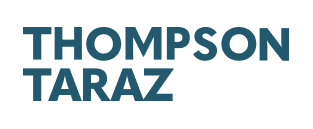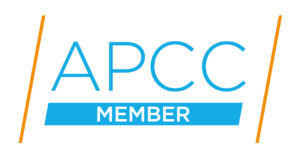For regulated financial services firms, one constant remains: the pressure on compliance teams to do more, and to do it faster. This is driving firms to either consider expanding their compliance teams or make tough prioritisation decisions that could risk non-compliance. Compliance technology offers a viable solution, and My Compliance Centre is seeing increasing interest from both Board members and Heads of Compliance. Firms that successfully implement technology solutions follow a clear, step-by-step roadmap.
Before we look at the roadmap and offer two examples where you may be able to secure a fast and effective result, it’s worth considering where most firms are in adopting compliance management technology solutions.
Manual processes – the number one challenge
Recently, we collaborated with a fintech association to survey their members, revealing that 82% of compliance teams regularly waste time managing important tasks because of inefficient tools and processes. Aside from financial crime, most compliance processes are still managed using manual systems, with compliance officers identifying manual processes as their number one challenge.
The emotional truth is that many compliance professionals feel overwhelmed. They are deeply committed to doing the right thing, protecting their firms, and meeting regulatory expectations, yet they are weighed down by inefficient processes that fail to reflect the strategic importance of their role. This not only limits their ability to excel but also prevents them from fully showcasing their value.
Typically, the manual processes these firms rely on are built around spreadsheets and email chains which are error-prone, time-consuming, and offer little in the way of meaningful oversight and insight. We explored the risks and benefits in more detail in recent articles Why Compliance Teams Are Switching To Automation and Six Risks Of Manual Compliance Processes.
There are undeniable cost benefits from implementing compliance automation technology solutions which are attractive to senior managers and Boards. Many firms that adopt these solutions find they can reduce additional recruitment with some even able to downsize their teams. It, also, gives firms the ability to scale their operations without proportionally increasing compliance headcount.
What’s holding firms back?
An increasing number of compliance officers like the idea of moving to a more automated world but some understandable concerns are holding them back.
How can firms find the time and resources to implement new technology and manage their ‘business as usual’ workload? What about the potential reputational damage if the technology fails to deliver the anticipated benefits?
Well, here’s the good news: automating compliance processes is much easier – and more rewarding – than many firms expect. Concerns that are preventing change can be mitigated by following a step-by-step roadmap and with implementation training and support.
Our Implementation Training and Support Programme is particularly effective in mitigating the impact of adopting new technology and often enables clients to start enjoying the benefits within a matter of a few weeks. For example, when firms purchase our Compliance Monitoring solution we take existing spreadsheet(s) and upload these into our system along with your current workflow processes, meaning that from day one My Compliance Centre feels and acts like an enhanced version of your existing Compliance Monitoring Programme.
Our roadmap to automation success
1. Document your processes
You may already have a clear idea of where technology could offer significant benefits. But, if you’re not sure a good approach is to document your compliance processes and for each one:
- What systems you use (e.g. spreadsheets and email)?
- Roughly what percentage of time does your team spend on this process?
- How much of that time relates to routine admin work that could be eliminated with automation (e.g. sending email reminders, capturing information onto central spreadsheets etc.)?
- Who is involved in the process (specific teams, business units etc.)?
- What percentage of time is spent analysing data to produce MI?
- Are there any MI gaps or analyses which is particularly difficult to carry out?
This will help you determine your priorities and the cost benefit of automation. In addition the information gathered will provide an excellent input for the process workflows that will be part of the implementation process.
2. Start small and scale
Don’t take on too much at once. Start with one area, learn from that implementation and scale up once you’ve built confidence in the system and your team’s ability to manage the change process.
Many firms will select a compliance process that delivers a strong benefit and which helps build the case for further investment. For example, Compliance Monitoring, a selection of Risk Registers or, perhaps, File Reviews which are essential to Consumer Duty in many sectors.
3. Define key objectives
Using the information you have from step 1 develop a clear system selection criteria. What features are important to you, for example is it user profiles to govern what people can see and do, is it a particular information to report, is it automation to eliminate a specific admin burden? etc.
4. Select the right system
Make sure the system you select has been specifically developed for regulated financial services firms, rather than something that has been adapted. We’d also strongly recommend you choose technology that’s easy to implement, intuitive, and doesn’t require internal IT support. This would normally involve a cloud-based software-as-a-service (SaaS) system that’s accessible from anywhere and which offers automatic updates and improvements.
5. Understand the implementation implications
Many systems will be labour intensive at the outset requiring you to spend hours entering your information. Others, like My Compliance Centre, will take that burden away from you.
6. Get the right training and ongoing support
Minimal training should be needed if the system is well designed. Yet you will still need ‘hands on’ support to help you avoid pitfalls, manage those first important steps and maximise the return from your investment.
Ready to get started?
At My Compliance Centre, we help firms at every step of the automation journey. Whether you’re just starting to explore automation or you’re ready to implement, contact us for a personalised consultation.
Compliance automation doesn’t just solve problems, it changes how firms think about compliance. It frees up time, reduces risk, improves outcomes, and empowers compliance professionals to play a more strategic role.
If you’re still working in spreadsheets and email, it’s time to ask: Isn’t there a better way?
The answer is yes—and it’s easier to get there than you think.
TWO EXAMPLES WHERE YOU MAY BE ABLE TO SECURE A FAST AND EFFECTIVE RESULT












